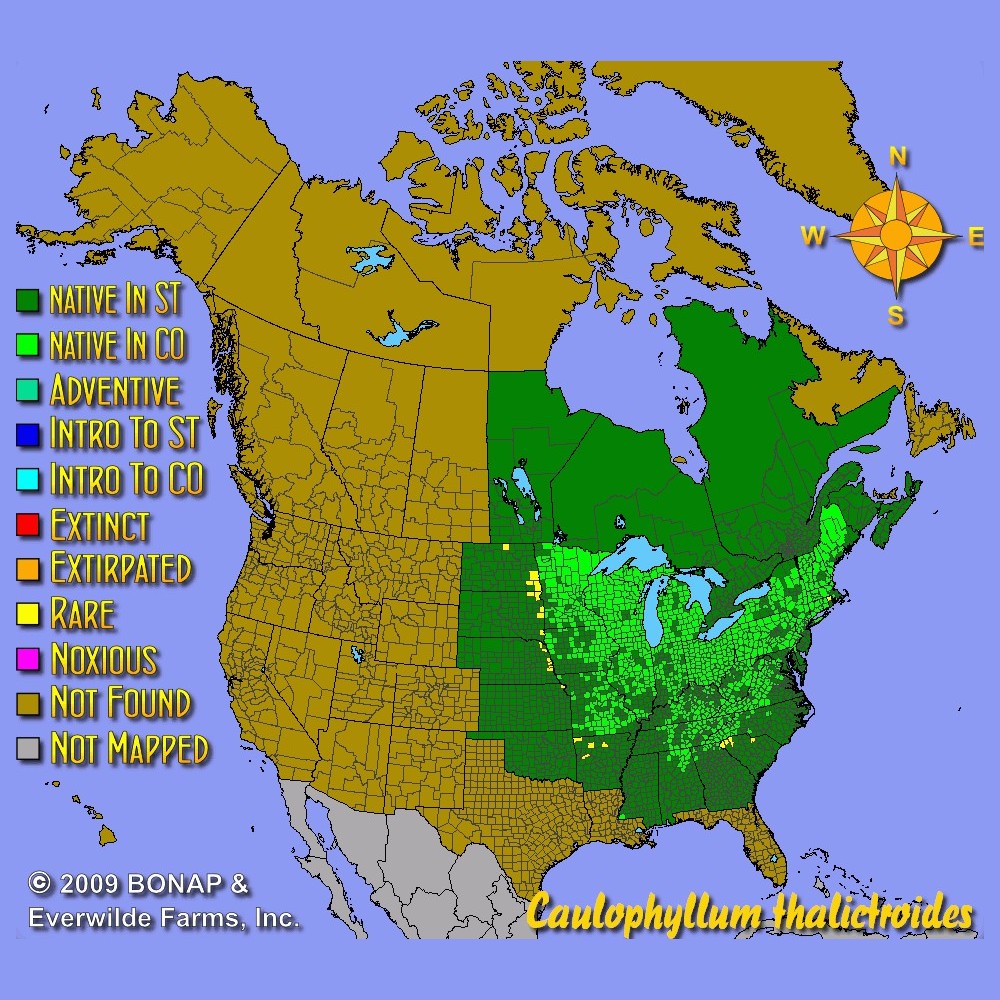Blue Cohosh Seeds
- HOW TO GROW
- FAST FACTS
- REVIEWS
HOW TO GROW
Sowing: The Blue Cohosh seed germinates very slowly and irregularly. For best results, pour very hot water over the blue cohosh seeds and soak them overnight; this softens the hard seed coat for faster germination. Next, mix the seeds with moist sand and store them in the refrigerator for 60 days before planting. Plant the seed just below the surface of the soil in fall or spring. The blue cohosh seeds may not germinate for several seasons, since they must experience repeated cycles of warm and cold weather to break their dormancy.
Growing: This plant prefers rich, moist woodland soil. Keep the soil consistently moist, not allowing it to dry out. This plant may not flower until its third or fourth year of growth. Mature Blue Cohosh plants will slowly spread by rhizomes, eventually forming a group of plants if growing conditions are favorable. This plant resists deer.
Harvesting: Blue Cohosh contains chemicals that can be harmful and irritating; the berries are especially toxic. Though the Caulophyllum thalictroides plant has historically been used for medicinal purposes, this practice is no longer regarded as safe because of the plant's toxicity.
Seed Saving: Allow the blooms to fully mature and dry on the stem. Remove the heads and spread them out to finish drying away from direct sunlight. Gently rub the Sweet Sultan seed heads to separate the seed from the husk. The small, oblong seeds of Sweet Sultan will have a feathery tuft on one end. Store the seeds in a cool, dry place.
FAST FACTS
Common Names: Papoose Root, Squaw Root
Latin Name: Caulophyllum thalictroides
Species Origin: US Native Wildflower
Type: Native Wildflowers
Life Cycle: Perennial
USDA Zones: 2, 3, 4, 5, 6, 7
US Regions: Midwest, Northern, Northeast, Southeast
Seeds per Ounce: 100
Stratification: Cold/Wet for 24 Weeks
Germination Ease: Stratify 24 Weeks
Sunlight: Part Sun, Shade
Height: 24 Inches
Color: Green
Bloom Season: Blooms Early Spring
Uses: Deer Resistant
Awesome!
DESCRIPTION

HOW TO GROW
Sowing: The Blue Cohosh seed germinates very slowly and irregularly. For best results, pour very hot water over the blue cohosh seeds and soak them overnight; this softens the hard seed coat for faster germination. Next, mix the seeds with moist sand and store them in the refrigerator for 60 days before planting. Plant the seed just below the surface of the soil in fall or spring. The blue cohosh seeds may not germinate for several seasons, since they must experience repeated cycles of warm and cold weather to break their dormancy.
Growing: This plant prefers rich, moist woodland soil. Keep the soil consistently moist, not allowing it to dry out. This plant may not flower until its third or fourth year of growth. Mature Blue Cohosh plants will slowly spread by rhizomes, eventually forming a group of plants if growing conditions are favorable. This plant resists deer.
Harvesting: Blue Cohosh contains chemicals that can be harmful and irritating; the berries are especially toxic. Though the Caulophyllum thalictroides plant has historically been used for medicinal purposes, this practice is no longer regarded as safe because of the plant's toxicity.
Seed Saving: Allow the blooms to fully mature and dry on the stem. Remove the heads and spread them out to finish drying away from direct sunlight. Gently rub the Sweet Sultan seed heads to separate the seed from the husk. The small, oblong seeds of Sweet Sultan will have a feathery tuft on one end. Store the seeds in a cool, dry place.
FAST FACTS
Common Names: Papoose Root, Squaw Root
Latin Name: Caulophyllum thalictroides
Species Origin: US Native Wildflower
Type: Native Wildflowers
Life Cycle: Perennial
USDA Zones: 2, 3, 4, 5, 6, 7
US Regions: Midwest, Northern, Northeast, Southeast
Seeds per Ounce: 100
Stratification: Cold/Wet for 24 Weeks
Germination Ease: Stratify 24 Weeks
Sunlight: Part Sun, Shade
Height: 24 Inches
Color: Green
Bloom Season: Blooms Early Spring
Uses: Deer Resistant
Reviews
Review
Awesome!






